1936 Auburn 852 SC Boattail Speedster
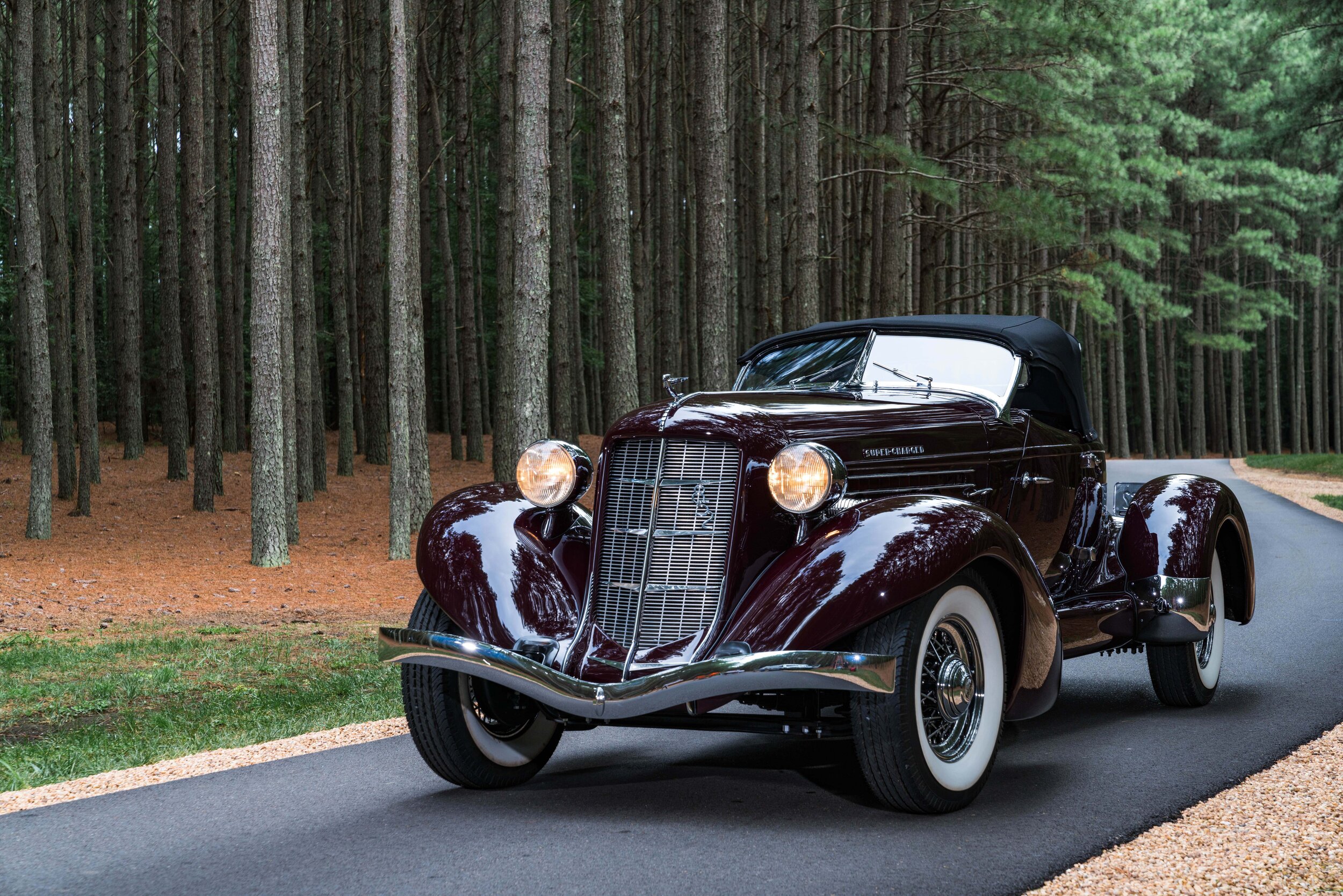
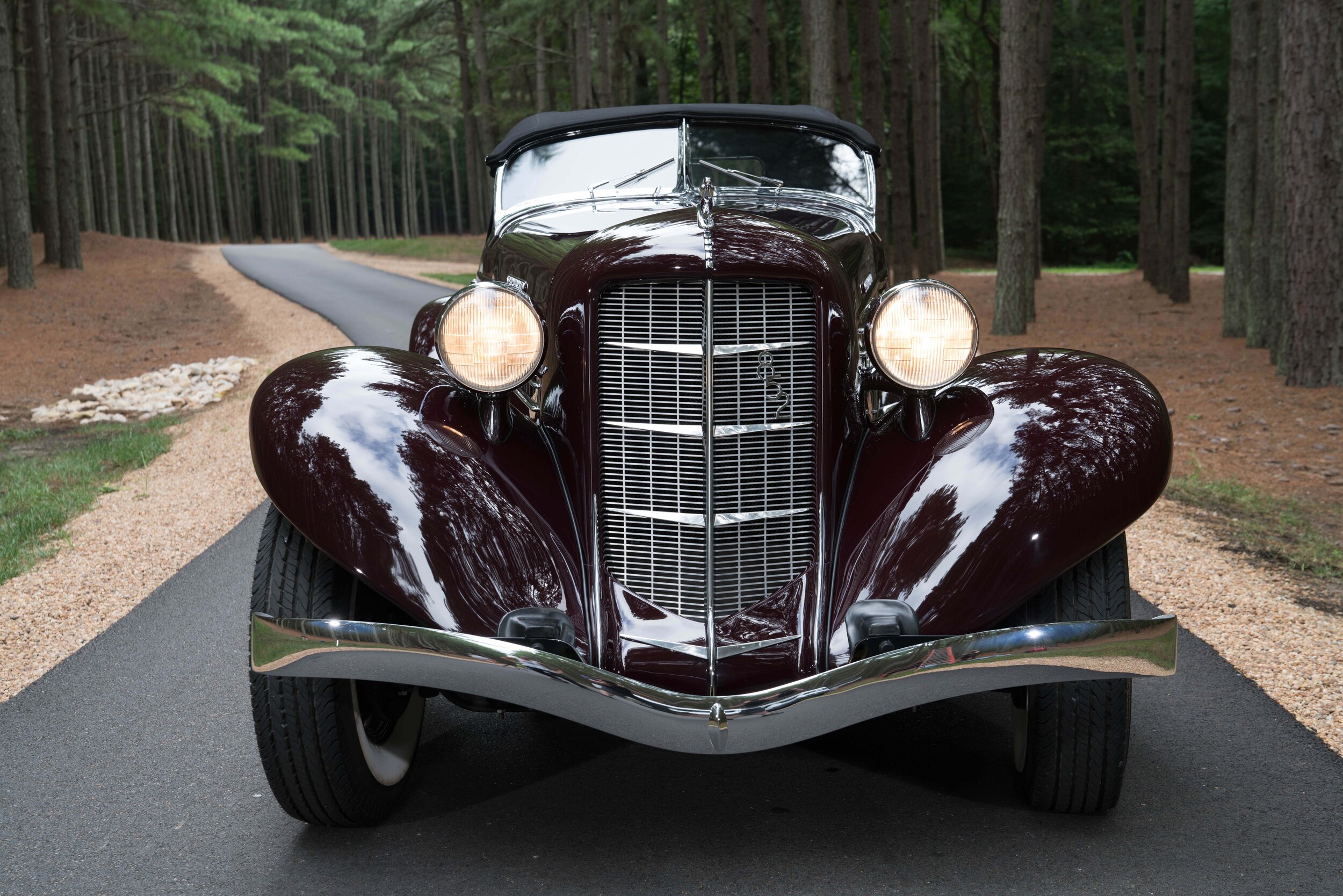
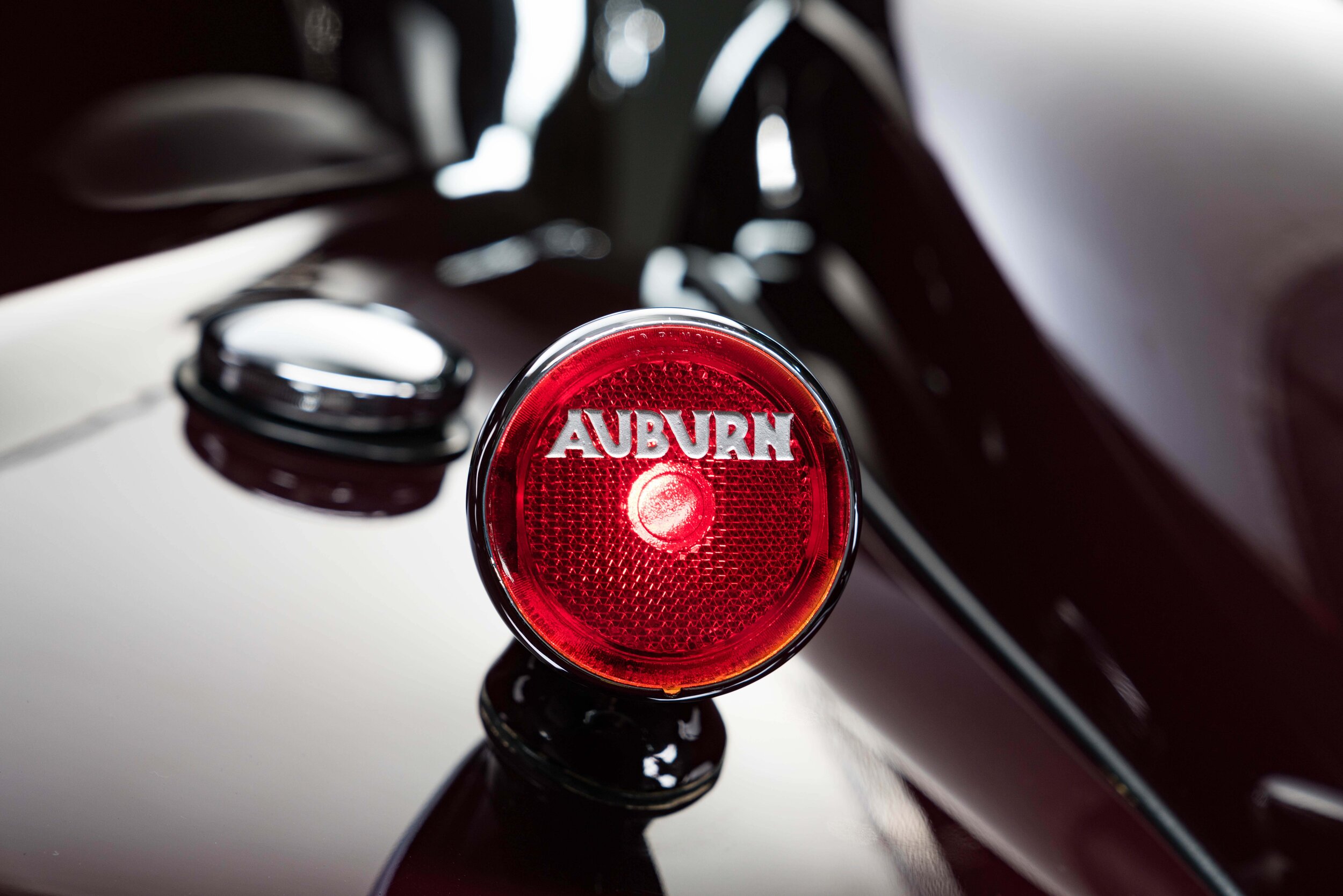

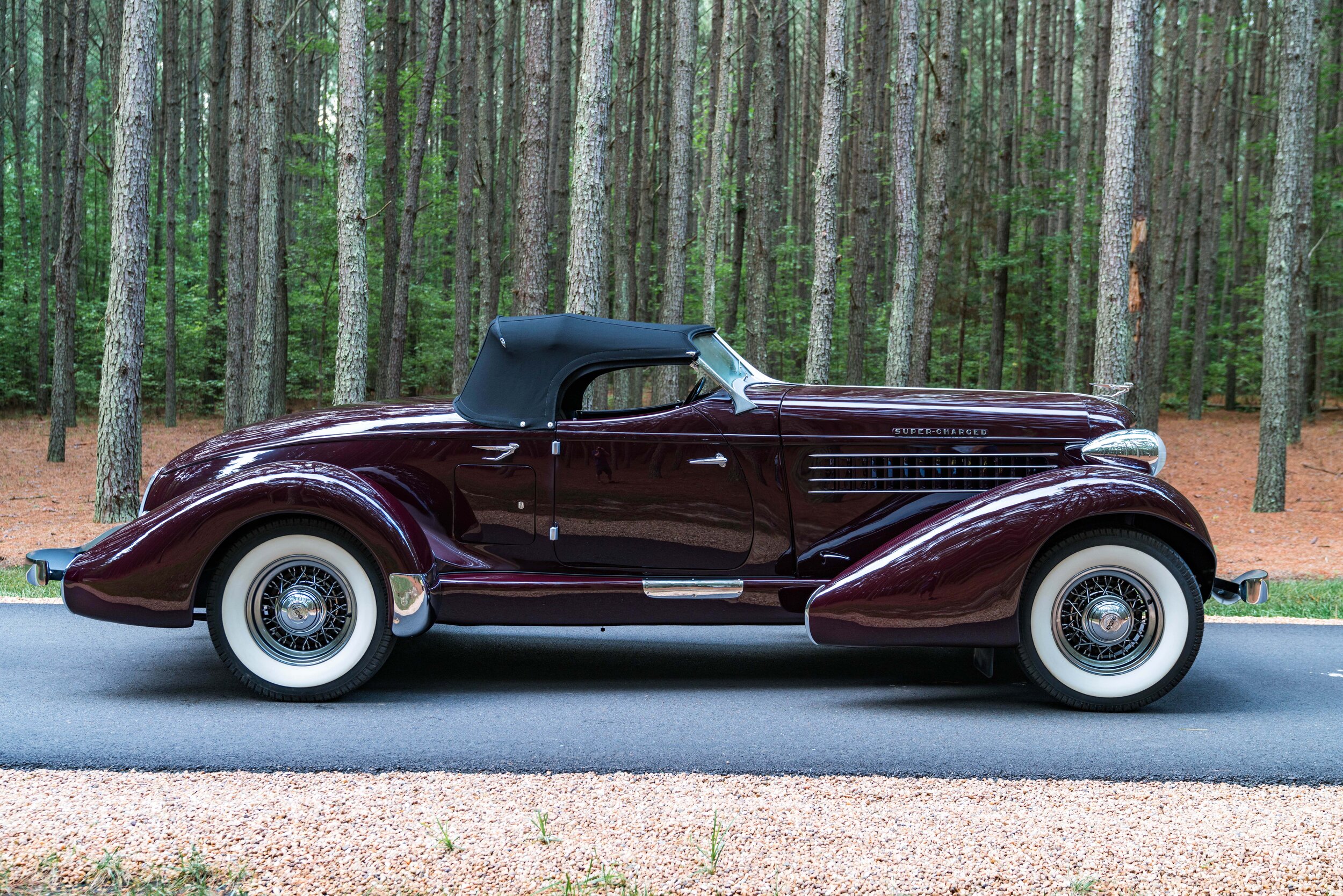
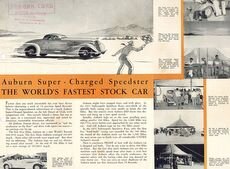
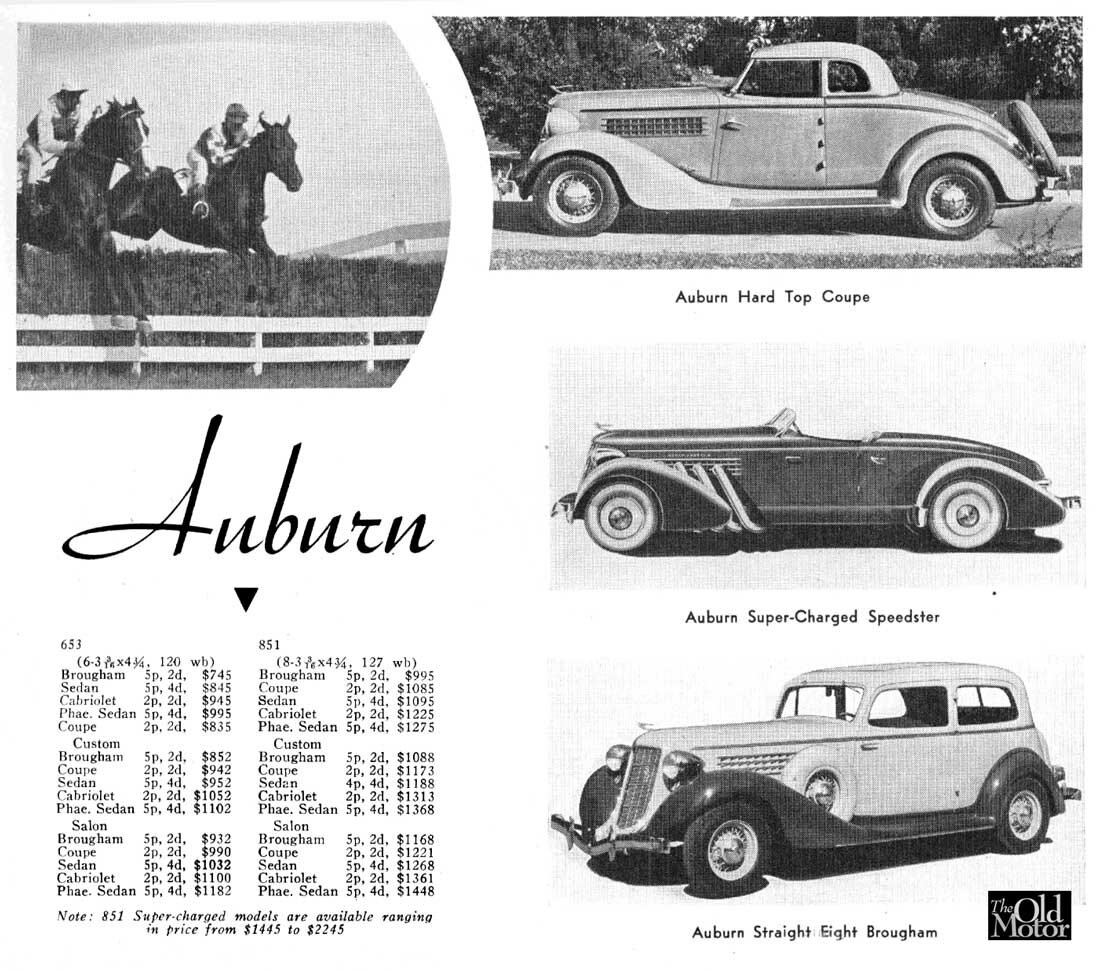
Known as one of the most stylish and stunning automobiles of all time, the Auburn 852 Boattail Speedster is a kinetic representation of what advanced engineering was capable of during the Great Depression. The 852 Speedster is still strongly remembered for its striking design just as much as its incredible performance. With its lightweight coachwork and 150 horsepower engine, the 852 Speedster could top 100mph, and each car was sold with a dash plaque emblazoned with the signature of the great racer Ab Jenkins proclaiming its performance.
As the roaring 1920s came to a close with the stock market crash of 1929, women’s fashions became more streamlined chic, just like the automobiles of the period, reflecting the social and economic shifts of the new decade. The youthful, exuberant silhouettes of the 20s became softer, more elegant. Hemlines descended, and curved figures were once again in vogue.
Dresses of the 1930s are distinctive in their technical aspects rather than highly embellished surface decoration as seen in the previous period. The expert cutting of the fabric often on the bias gives the fashion of the 1930s their ultra-elegant silhouettes.
E.L. Cord had worked wonders at Auburn in his relatively short tenure at the head of the company. When he arrived in 1924, Auburn cars were staid, dull and unappealing. With a stroke of genius, Cord revitalized the brand simply by repainting unsold stock in bright colors and launching a vigorous advertising campaign. As reward for saving the company, he was offered a seat at the director’s table, but instead he bought the whole company and put himself in charge. Within a few short years, the marque’s image was transformed, with sports stars, business moguls and Hollywood actors seen in stylish Auburn automobiles.
E.L. Cord had carefully positioned the brand within his fast growing automobile empire by offering stylish performance cars at a much lower price point than Duesenberg. For 1931, sales had continued to rebound despite economic conditions, and Auburn introduced fresh new styling that was inspired by the designed Alex Leamy’s Cord L29. As a further boost to Auburn, a new Speedster was unveiled in 1931. The car featured a sleek look with its split radiators shell, split and heavily raked windscreen and signature tapered boat-tail.
All along, E.L. Cord was losing interest in building cars and looking to invest heavily in the field of Aviation. Sales began to slump and Auburn looked for a way to revive the brand yet again. Gordon Buehrig was brought in to redesign standard Auburns and charged with creating a new Speedster, inspired by a Duesenberg J he designed that was built by Weymann. The caveat being he had to utilize leftover ’33 bodies from Union City Body to save money. The new car utilized very little of the old bodies, mainly the mid-section of the cabin and top frame. The fenders, tail, and most of the cowl were all new and in the end, Buehrig felt that this new car was even better balanced and prettier than the Duesenberg that inspired it. Lycoming 8-cylinder engines were again utilized, with the ultimate version found in the 852 with its engine-driven Schwitzer-Cummins supercharger adapted by August Duesenberg.
The Auburn 852 Speedster has become a truly iconic American performance car that has earned its place among the most collectible and desirable motorcars of the era. Many have copied its looks, but of course, nothing can capture the magic of the original thing.
Specifications:
Configuration: Front-Engine, Rear Wheel Drive
Engine: 280 CID Lycoming L-Head Inline 8-Cylinder
Horsepower: 150bhp at 4,400RPM
Transmission: 3-Speed Manual w/ Columbia Two-Speed Rear End



















